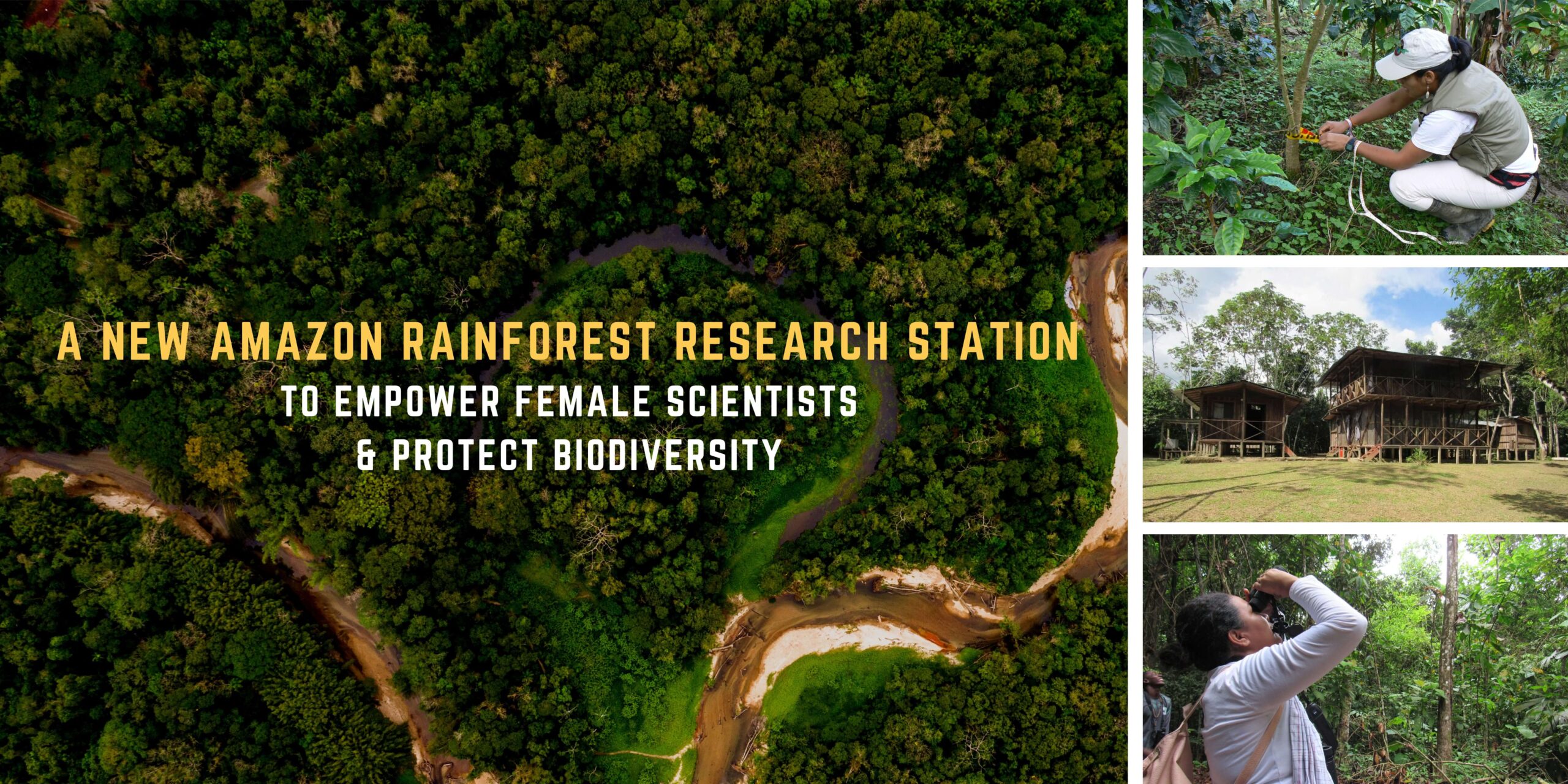
Project Overview:
Women for Conservation is excited to announce our development plans for a biological research and conservation station in the Colombian Amazon! This Amazon Rainforest Research Station will be located in the ProAves El Jaguar Natural Reserve, a site of extraordinary biodiversity in Colombia’s Orinoco River basin. This project will prevent poaching by allowing increased monitoring and research data collection, while also empowering Colombian women scientists through scholarships and research training programs.
Project Cost: $49,870 USD

The El Jaguar Nature Reserve has been designated as both a Key Biodiversity Area (KBA) and Alliance for Zero Extinction (AZE) site. Encompassing 4,922 acres along the Orinoco River in eastern Colombia, the reserve is home to hundreds of rare species, including multiple species designated as endangered or critically endangered by the IUCN. There have been recorded sightings of over 300 bird species at the site, and there are many rare butterfly species that have not yet been adequately recorded. The tremendous variety of native plants at the reserve has also not been adequately studied. It is vital that we expand our capacity for research at the site in order to document and monitor its extraordinary biodiversity.
Key Species:


Maintaining a constant presence at the reserve is absolutely vital to its protection. During the pandemic, reduced activity and a lack of law enforcement presence allowed fisherman and poachers to illegally enter the reserve and the surrounding buffer zone. At one point, forty fishermen were camping by the lake to the northwest of the reserve. Although these incursions have been stopped, expanding research and monitoring at the site will help protect it from intruders. Along with improving infrastructure, upgrading equipment to allow for better communication throughout the reserve will also assist rangers in patrolling the area.

Our plan involves updating the site’s dormitory infrastructure, research equipment, women-centered training programs, and community involvement initiatives.
The most innovative and trailblazing aspect of this project involves our devotion to empowering women scientists and researchers. We will be starting a new program that offers grants for women to conduct research at the site. We plan to offer ten grants to students in Colombia and five grants to women from outside the country. Eligible students can be completing either undergraduate or postgraduate studies, and the grants are inclusive of accommodation, food, research supervision and a daily stipend. We will also cover travel costs for students within Colombia.
We plan to expand our current Women for Conservation programs at the reserve. Through our community science workshops, we will train 30 women to become local leaders in conservation. These women reside in the buffer zone surrounding the reserve, and we will provide them with the equipment and training they need to take an active role in monitoring biodiversity and protecting wildlife habitats. We will also be inviting 15 young women from nearby communities to take part in our young researcher’s program, and we will cover the costs of their stay at the reserve.

We have observed that the most effective way to protect wildlife is to work directly with the communities that reside in these rural areas.Local residents have been trained to assist in monitoring vulnerable species, including the Churuco Monkey, Plains Night Monkey, Harpy Eagle, Amazon Pink Dolphin, Jaguar, and Giant River Otter. Community members record each sighting, documenting the location, abundance and behavior of the animals. Knowledge of the status of wild populations is vital for directing conservation strategies of these species.
Update: Daughters for Earth Funds W4C’s Amazon Rainforest Research Station >>>


